Camera Buying Guide: Key Factors to Consider in 2025
Before diving into our top picks, let’s explore the essential factors to consider when choosing a camera in 2025. Understanding these elements will help you make an informed decision based on your specific photography needs.
Understanding key camera specifications helps you make the right choice for your photography needs
Sensor Size and Resolution
The sensor is the heart of any digital camera, and its size significantly impacts image quality. In 2025, we’re seeing four main sensor sizes:
| Sensor Type | Size Comparison | Typical Resolution | Best For |
| Full-Frame | Largest consumer format (35mm equivalent) | 24-61MP | Professional work, low-light photography, shallow depth of field |
| APS-C | ~1.5-1.6x smaller than full-frame | 20-40MP | Enthusiasts, wildlife (due to crop factor), balanced performance |
| Micro Four Thirds | ~2x smaller than full-frame | 20-25MP | Travel, portability, telephoto reach |
| 1-inch | ~4x smaller than full-frame | 16-20MP | Compact cameras, everyday photography |
Higher resolution (more megapixels) allows for larger prints and more aggressive cropping, but it’s not always better. For most photographers, the sweet spot in 2025 is between 24-45MP, offering excellent detail without overwhelming file sizes.
AI Features and Computational Photography
2025 has seen remarkable advancements in AI-powered photography features:
- Subject recognition and tracking (humans, animals, vehicles)
- Intelligent scene optimization
- Computational RAW processing
- AI-powered noise reduction
- Automated focus stacking and HDR
- Real-time exposure suggestions
Lens Compatibility and Ecosystem
Consider the lens ecosystem when investing in a camera system. Native lenses typically offer the best performance, but adapters have become increasingly capable in 2025. Evaluate:
- Range of available lenses (especially for your preferred photography style)
- Cost of expanding your lens collection
- Adapter options for using legacy lenses
- Third-party lens availability
Hybrid Shooting Capabilities
Even if you’re primarily focused on photography, having strong video capabilities provides creative flexibility. Key video features to consider include:
- Resolution and frame rate options (4K/60fps is now standard, with 6K and 8K becoming more common)
- Codecs and bit depth for color grading
- Recording time limits
- In-body stabilization effectiveness for handheld video
Handling and Ergonomics
A camera with excellent specs but poor ergonomics can hinder your photography experience. Consider:
- Button layout and customization options
- Weight and size for your shooting style
- Weather sealing for outdoor photography
- Battery life (significantly improved in 2025 models)
- Touchscreen implementation and menu system
Connectivity and Workflow
Modern cameras offer various connectivity options that streamline your workflow:
- Wi-Fi and Bluetooth for remote control and image transfer
- USB-C charging and tethering capabilities
- Cloud integration for automatic backups
- Smartphone companion apps for remote shooting and editing
Top 5 Mirrorless Cameras of 2025
Mirrorless cameras continue to dominate the photography market in 2025, offering the perfect balance of performance, innovation, and portability. Here are our top picks across different categories and price points.
1. Sony Alpha a1 II: The Ultimate Hybrid Powerhouse
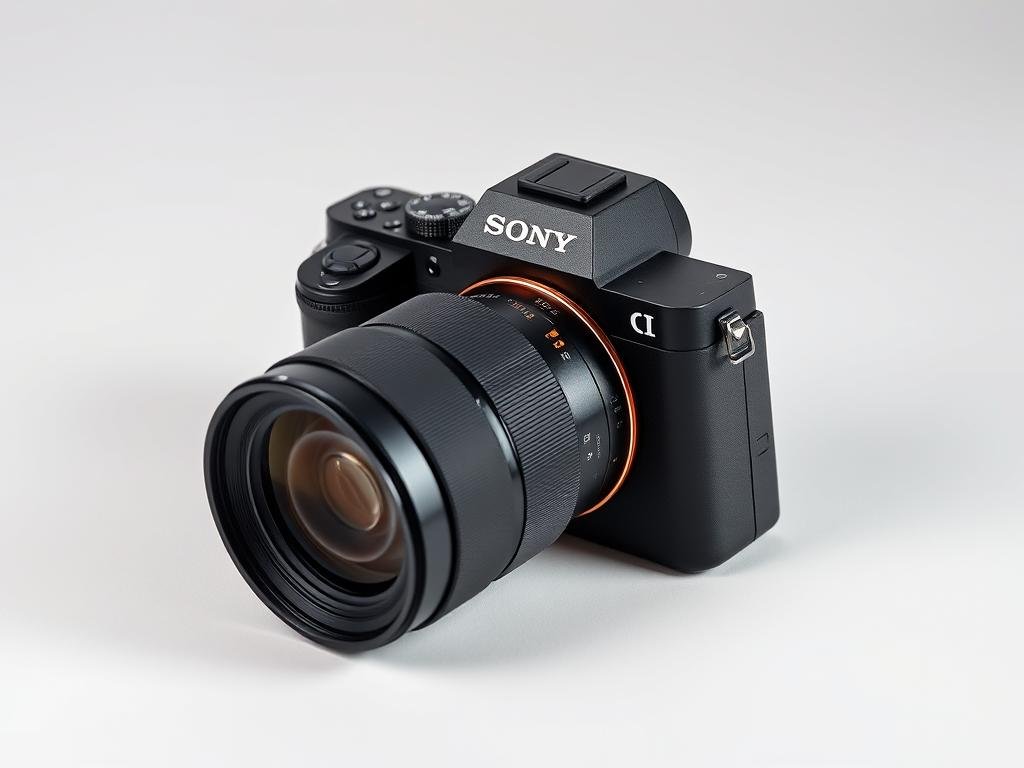
| Specifications | Details |
| Sensor | 50.1MP Full-Frame Stacked CMOS |
| Processor | BIONZ XR II |
| ISO Range | ISO 50-102,400 (expandable to 204,800) |
| Continuous Shooting | Up to 40fps (electronic), 20fps (mechanical) |
| Autofocus | 759-point phase-detection with advanced AI subject recognition |
| Video | 8K/60p, 4K/120p, 10-bit 4:2:2 |
| Stabilization | 8.5-stop in-body image stabilization |
| Price Range | $6,499-$6,999 |
Pros
- Exceptional image quality with outstanding dynamic range
- Industry-leading autofocus with enhanced subject recognition
- Blazing-fast burst shooting with minimal buffer limitations
- Professional-grade video capabilities
- Improved battery life over predecessor
Cons
- Premium price point
- Complex menu system requires learning curve
- Large RAW file sizes demand storage investment
- Heavier than some competing models
The Sony Alpha a1 II represents the pinnacle of mirrorless technology in 2025. Building on the success of its predecessor, this flagship model delivers exceptional performance across every metric. The improved 50.1MP stacked CMOS sensor offers remarkable detail retention while maintaining impressive low-light capabilities. What truly sets the a1 II apart is its versatility – it excels equally at high-resolution landscape photography, fast-action sports shooting, and professional videography.
Sony’s latest AI-powered autofocus system is nothing short of revolutionary, with enhanced subject recognition that can identify and track humans, animals, birds, vehicles, and even insects with uncanny precision. The real-time tracking rarely loses focus, even in challenging conditions. For professionals who demand the absolute best and can justify the investment, the Alpha a1 II is the most complete camera system available in 2025.
Ready to experience the ultimate mirrorless camera?
The Sony Alpha a1 II delivers uncompromising performance for the most demanding professionals.
2. Canon EOS R5 Mark II: The High-Resolution All-Rounder
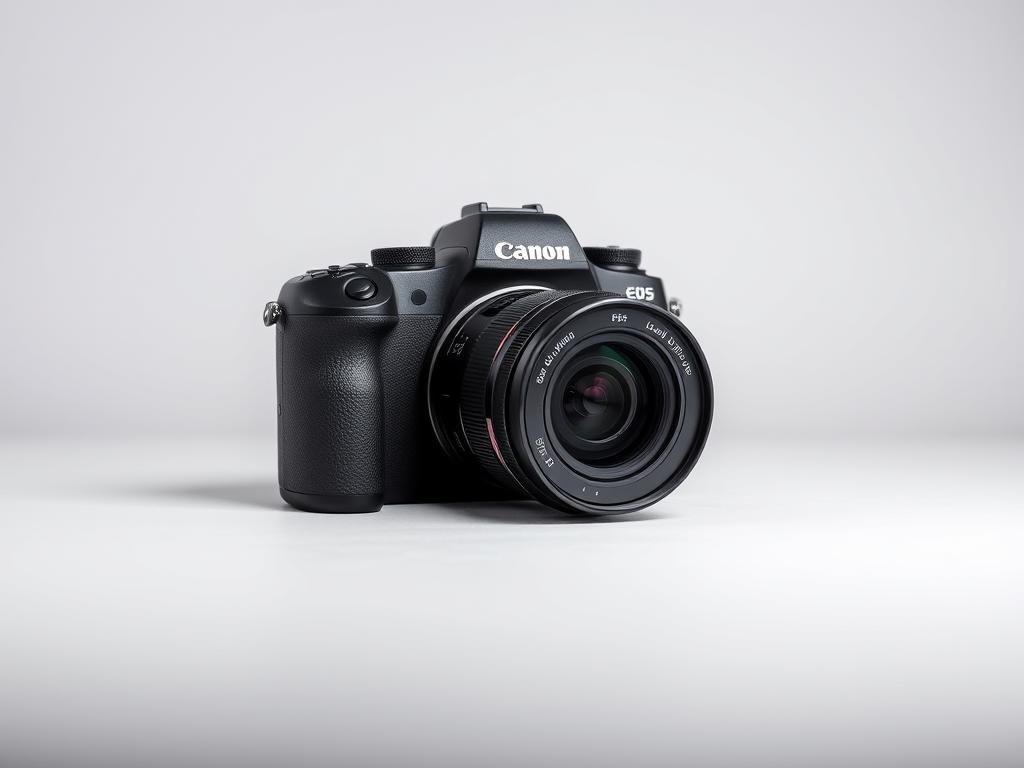
| Specifications | Details |
| Sensor | 45MP Full-Frame CMOS |
| Processor | DIGIC X with AI Processing Unit |
| ISO Range | ISO 100-51,200 (expandable to 102,400) |
| Continuous Shooting | Up to 30fps (electronic), 12fps (mechanical) |
| Autofocus | 1,053-point Dual Pixel CMOS AF II with Eye Control AF |
| Video | 8K/60p, 4K/120p, 10-bit 4:2:2 |
| Stabilization | 8-stop in-body image stabilization |
| Price Range | $3,899-$4,299 |
Pros
- Excellent 45MP sensor with great dynamic range
- Revolutionary Eye Control AF technology
- Improved heat management for unlimited video recording
- Intuitive menu system and excellent ergonomics
- Growing selection of outstanding RF lenses
Cons
- Premium price point
- Eye Control AF doesn’t work equally well for all users
- Some RF lenses are quite expensive
- Battery life could be better when using EVF intensively
The Canon EOS R5 Mark II builds upon the success of its predecessor with meaningful improvements across the board. The 45MP sensor delivers stunning detail and dynamic range, while Canon’s latest Dual Pixel CMOS AF II system with Eye Control Focus provides an almost magical focusing experience – simply look at your subject through the viewfinder, and the camera focuses there instantly.
Canon has addressed the overheating issues that plagued the original R5, implementing a new heat dissipation system that allows for virtually unlimited 8K recording. The improved DIGIC X processor with a dedicated AI unit enables enhanced subject recognition and tracking, making this an excellent choice for wildlife and sports photographers.
With its balance of high resolution, speed, and video capabilities, the EOS R5 Mark II is the ideal camera for professional photographers who need versatility without compromise. Wedding photographers, in particular, will appreciate its silent shooting, excellent low-light performance, and dual card slots for backup security.
Elevate your photography with the Canon EOS R5 Mark II
Professional-grade performance with revolutionary Eye Control AF technology.
3. Fujifilm X-T5: The APS-C Champion
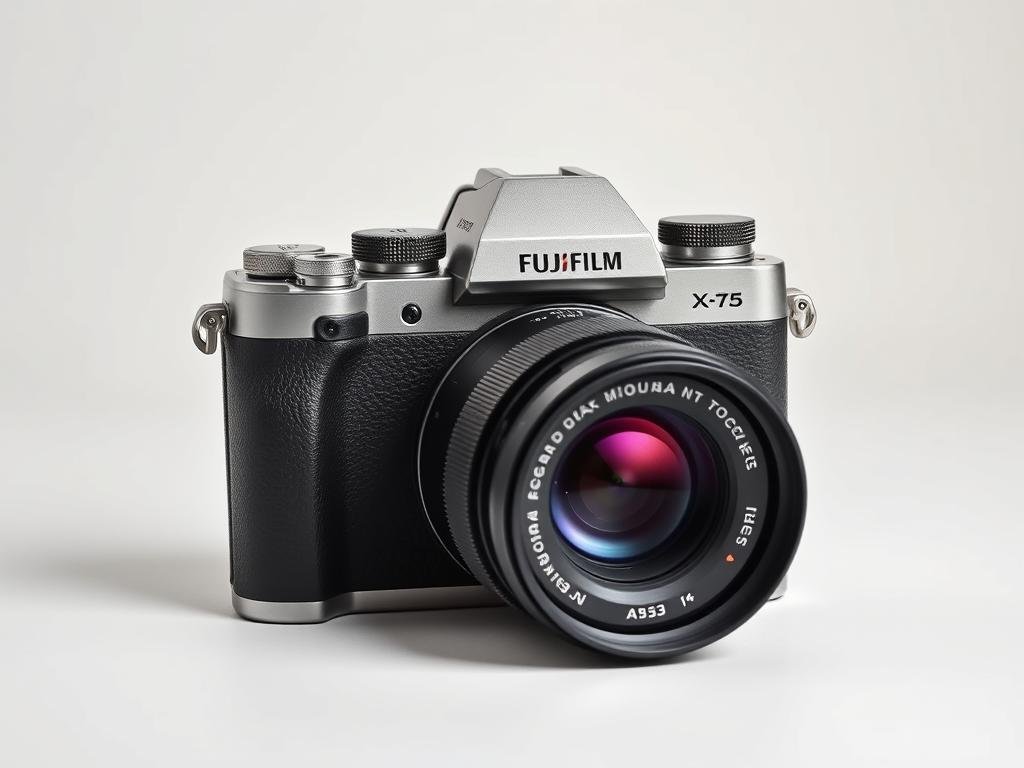
| Specifications | Details |
| Sensor | 40MP APS-C X-Trans CMOS 5 HR |
| Processor | X-Processor 5 |
| ISO Range | ISO 125-12,800 (expandable to 64-51,200) |
| Continuous Shooting | Up to 20fps (electronic), 15fps (mechanical) |
| Autofocus | 425-point hybrid phase/contrast detect with subject recognition |
| Video | 6.2K/30p, 4K/60p, 10-bit 4:2:2 |
| Stabilization | 7-stop in-body image stabilization |
| Price Range | $1,699-$1,899 |
Pros
- Exceptional image quality from 40MP APS-C sensor
- Beautiful film simulation modes for JPEG shooters
- Intuitive analog-style controls
- Compact and lightweight system
- Excellent value compared to full-frame alternatives
Cons
- Autofocus not quite on par with Sony and Canon flagships
- Buffer fills quickly when shooting at maximum resolution
- Video features slightly limited compared to X-H2
- Smaller grip may not suit photographers with larger hands
The Fujifilm X-T5 continues to prove that APS-C sensors can deliver professional-grade results. With its 40MP X-Trans CMOS 5 HR sensor, the X-T5 captures incredible detail while maintaining Fujifilm’s renowned color science. The tactile, analog-style controls provide a shooting experience unlike any other modern camera, making photography feel more intentional and engaging.
Fujifilm’s film simulation modes remain a standout feature, allowing JPEG shooters to achieve stunning results straight out of camera. The latest iterations include enhanced versions of classic Fujifilm film stocks like Velvia, Acros, and Classic Chrome.
While the X-T5 may not match the absolute fastest autofocus systems on the market, its performance is more than adequate for most photography scenarios, and the subject detection has improved significantly. For photographers who prioritize image quality, handling, and value over absolute speed, the X-T5 represents one of the best investments in the 2025 camera market.
Experience the Fujifilm X-T5 difference
Exceptional image quality and classic handling in a compact, powerful package.
4. Nikon Z6 III: The Versatile All-Rounder
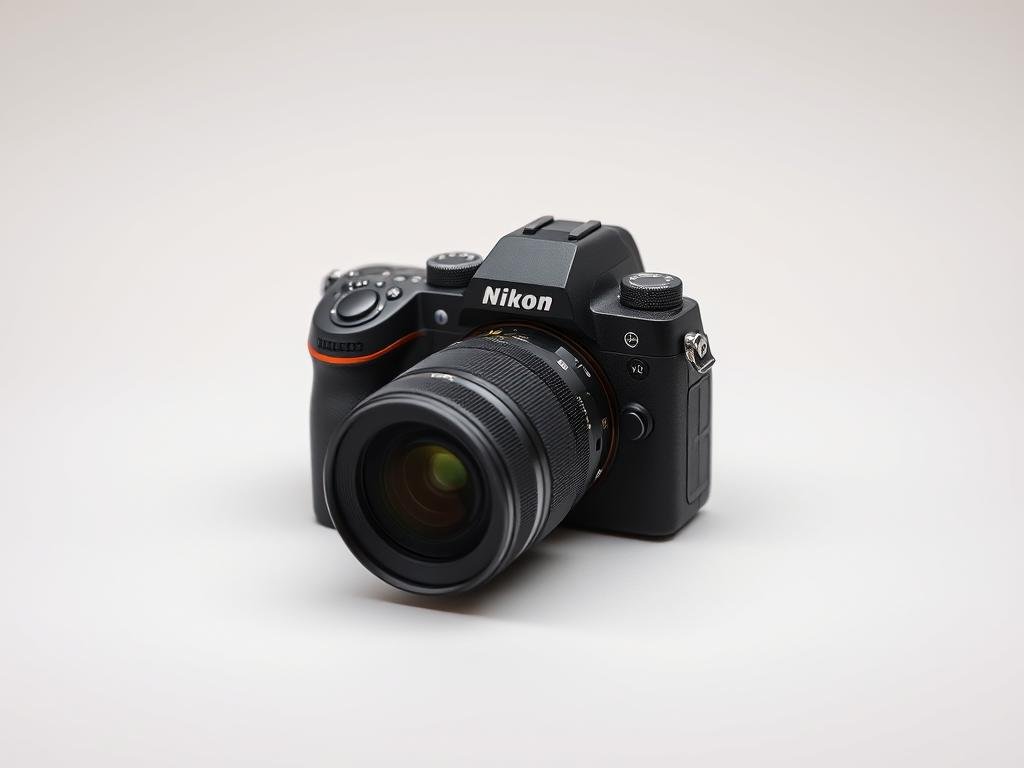
| Specifications | Details |
| Sensor | 24.5MP Full-Frame BSI CMOS |
| Processor | EXPEED 7 |
| ISO Range | ISO 100-51,200 (expandable to 204,800) |
| Continuous Shooting | Up to 120fps (APS-C crop), 20fps (full-frame) |
| Autofocus | 493-point phase-detection with 3D tracking |
| Video | 6K/60p, 4K/120p, 10-bit N-Log |
| Stabilization | 7-stop in-body image stabilization |
| Price Range | $2,299-$2,499 |
Pros
- Excellent low-light performance
- Impressive burst speeds with deep buffer
- Outstanding ergonomics and build quality
- Excellent 5.76M-dot electronic viewfinder
- New MP4 Lite format for smaller file sizes
Cons
- No resolution increase from Z6 II
- Z-mount lens lineup still growing
- Battery charger not included
- Slightly less dynamic range than competitors
The Nikon Z6 III strikes an impressive balance between performance, image quality, and value. While it maintains the same 24.5MP resolution as its predecessor, the new partially-stacked sensor design delivers significant improvements in readout speed and autofocus performance. The Z6 III can shoot at an astonishing 120fps in APS-C crop mode, making it an excellent choice for sports and wildlife photographers.
Nikon’s latest autofocus system is a major highlight, with reliable subject detection and tracking that works exceptionally well in challenging lighting conditions. The 5.76M-dot electronic viewfinder is among the best we’ve tested, offering a bright, clear view with minimal lag.
Video capabilities have also seen substantial improvements, with 6K/60p recording and the new MP4 Lite format that creates smaller files that are quicker to process. For photographers who don’t need ultra-high resolution but want excellent all-around performance, the Z6 III represents outstanding value in the full-frame market.
Discover the versatile Nikon Z6 III
Exceptional performance and value in a robust, professional package.
5. OM System OM-1 Mark II: The Micro Four Thirds Marvel
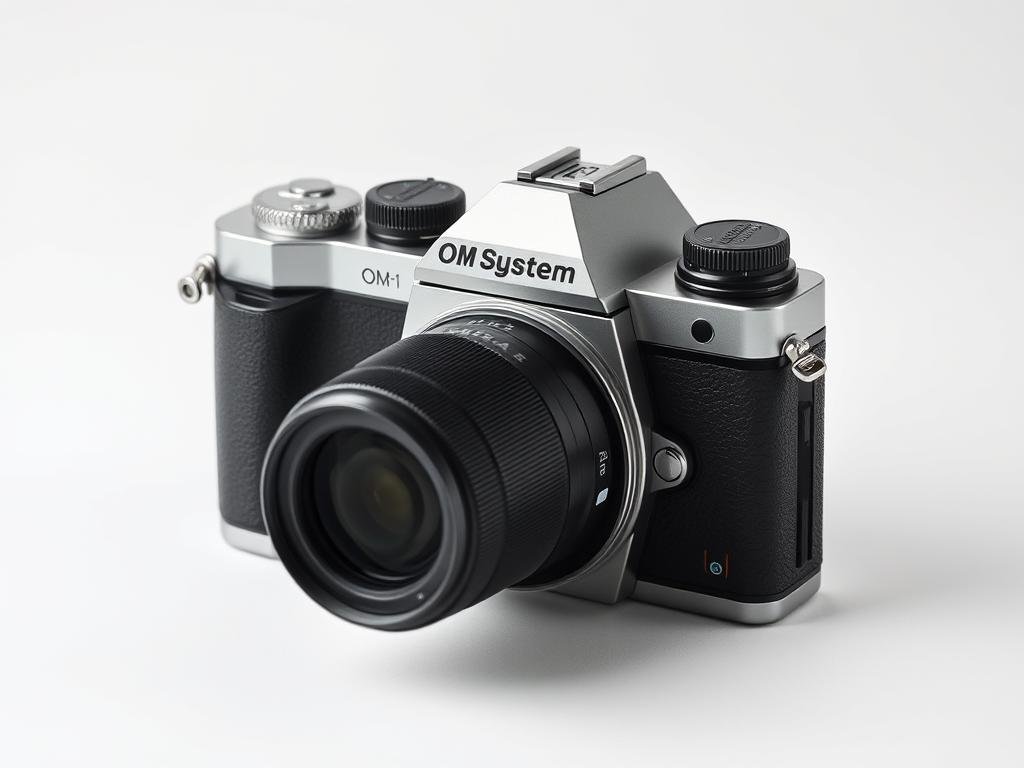
| Specifications | Details |
| Sensor | 20.4MP Micro Four Thirds Stacked CMOS |
| Processor | TruePic X |
| ISO Range | ISO 80-25,600 (expandable to 102,400) |
| Continuous Shooting | Up to 120fps (electronic), 10fps (mechanical) |
| Autofocus | 1,053-point Cross-Type Phase Detection AF |
| Video | 4K/60p, 10-bit 4:2:2 |
| Stabilization | 8.5-stop in-body image stabilization |
| Price Range | $1,999-$2,199 |
Pros
- Incredible 8.5-stop image stabilization
- Exceptional weather sealing (IP53 rated)
- Computational photography features like Live ND and High Res Shot
- Compact and lightweight system
- Specialized features for astrophotography
Cons
- Limited to 20MP resolution
- High ISO performance lags behind larger sensors
- Relatively minor upgrade from the original OM-1
- Menu system can be complex
The OM System OM-1 Mark II showcases the continued innovation in the Micro Four Thirds format. While its 20.4MP resolution might seem modest compared to other cameras on this list, the stacked CMOS sensor delivers impressive speed and autofocus capabilities. The standout feature is undoubtedly the class-leading 8.5-stop image stabilization system, which allows for handheld shooting at shutter speeds that would normally require a tripod.
The OM-1 Mark II excels in specialized photography niches, particularly astrophotography with its Night Vision mode and Starry Sky AF. Its computational photography features, including Live ND, Focus Stacking, and High Res Shot, expand creative possibilities without requiring additional accessories.
For photographers who prioritize portability without sacrificing professional features, the OM-1 Mark II offers an excellent balance. The extensive Micro Four Thirds lens ecosystem provides options for virtually any photography style, often at more affordable prices than full-frame equivalents. The 2x crop factor also makes this an excellent choice for wildlife photography, effectively doubling the reach of telephoto lenses.
Experience the OM System advantage
Incredible stabilization and computational features in a weather-sealed, portable package.
Top 3 DSLRs of 2025
While mirrorless cameras dominate the market in 2025, DSLRs still offer unique advantages for certain photographers. Their optical viewfinders provide a direct view of the scene without electronic interpretation, and their mature lens ecosystems offer excellent value. Here are the top DSLRs that continue to impress in 2025.
1. Nikon D850: The Enduring Professional Workhorse
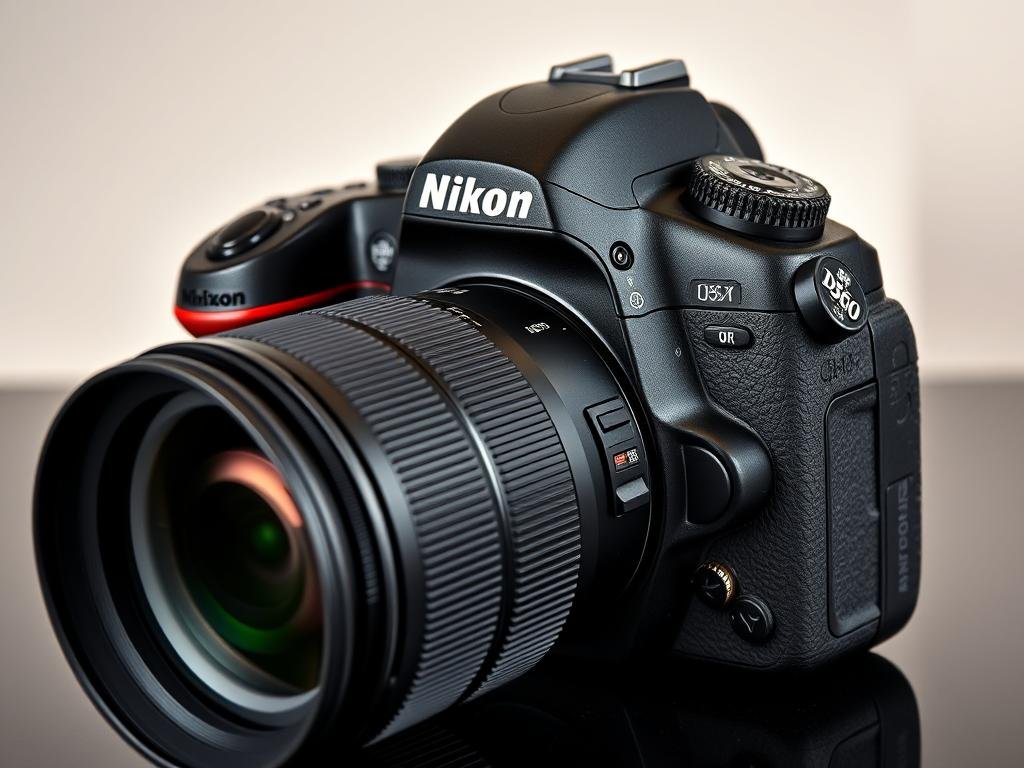
| Specifications | Details |
| Sensor | 45.7MP Full-Frame BSI CMOS |
| Processor | EXPEED 5 |
| ISO Range | ISO 64-25,600 (expandable to 102,400) |
| Continuous Shooting | 7fps (9fps with battery grip) |
| Autofocus | 153-point phase-detection system (99 cross-type) |
| Video | 4K/30p, 1080/120p |
| Stabilization | Lens-based only |
| Price Range | $2,499-$2,799 |
Pros
- Exceptional image quality with outstanding dynamic range
- Optical viewfinder with 100% coverage
- Incredible battery life (1,840 shots per charge)
- Robust, weather-sealed construction
- Access to vast F-mount lens ecosystem
Cons
- Slower continuous shooting than mirrorless rivals
- Autofocus system less advanced than newer models
- Heavier than comparable mirrorless cameras
- Limited video features by 2025 standards
The Nikon D850 remains a benchmark for DSLR performance even in 2025. Its 45.7MP sensor continues to deliver exceptional image quality with outstanding dynamic range and detail. The native ISO 64 setting provides a unique advantage for landscape photographers seeking the cleanest possible image quality.
While its autofocus system can’t match the AI-powered tracking of the latest mirrorless cameras, it remains highly capable for most photography scenarios. The optical viewfinder provides a direct view of the scene without electronic interpretation, which some photographers still prefer over even the best EVFs.
The D850’s exceptional battery life and robust build quality make it a reliable tool for professional photographers, especially those working in challenging environments. For photographers with an existing collection of F-mount lenses, the D850 continues to represent excellent value in 2025.
Experience the legendary Nikon D850
Timeless image quality and reliability in a professional DSLR package.
2. Canon EOS 5D Mark IV: The Versatile DSLR Classic
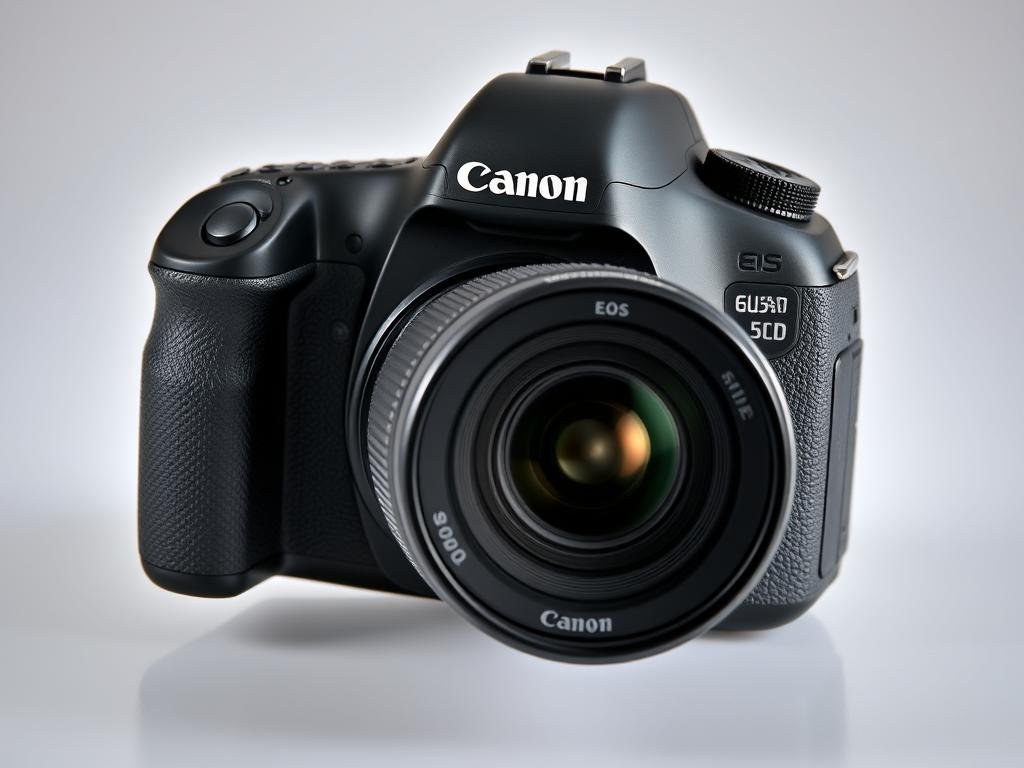
| Specifications | Details |
| Sensor | 30.4MP Full-Frame CMOS |
| Processor | DIGIC 6+ |
| ISO Range | ISO 100-32,000 (expandable to 102,400) |
| Continuous Shooting | 7fps |
| Autofocus | 61-point phase-detection system (41 cross-type) |
| Video | 4K/30p (1.74x crop), 1080/60p |
| Stabilization | Lens-based only |
| Price Range | $2,299-$2,499 |
Pros
- Excellent image quality with good dynamic range
- Reliable Dual Pixel CMOS AF for Live View
- Intuitive touchscreen interface
- Robust weather sealing
- Access to extensive EF lens ecosystem
Cons
- Heavy 4K video crop factor
- Slower continuous shooting than mirrorless rivals
- No in-body image stabilization
- CF card slot rather than faster CFexpress
The Canon EOS 5D Mark IV continues to be a reliable workhorse for professional photographers who prefer the DSLR experience. Its 30.4MP sensor delivers excellent image quality with Canon’s signature color science that many photographers still prefer for portrait and wedding work.
While its specifications may seem modest compared to the latest mirrorless cameras, the 5D Mark IV offers a shooting experience that some photographers still find more intuitive. The optical viewfinder provides a clear, lag-free view, and the excellent battery life means you can shoot all day without worrying about carrying spare batteries.
For photographers with an investment in Canon’s EF lens system, the 5D Mark IV remains a cost-effective option in 2025. Its Dual Pixel CMOS AF system, while primarily designed for video, also makes Live View shooting more practical than on many other DSLRs.
Choose the proven Canon EOS 5D Mark IV
Reliable performance and excellent image quality in a professional DSLR package.
3. Nikon D7500: The Enthusiast’s DSLR
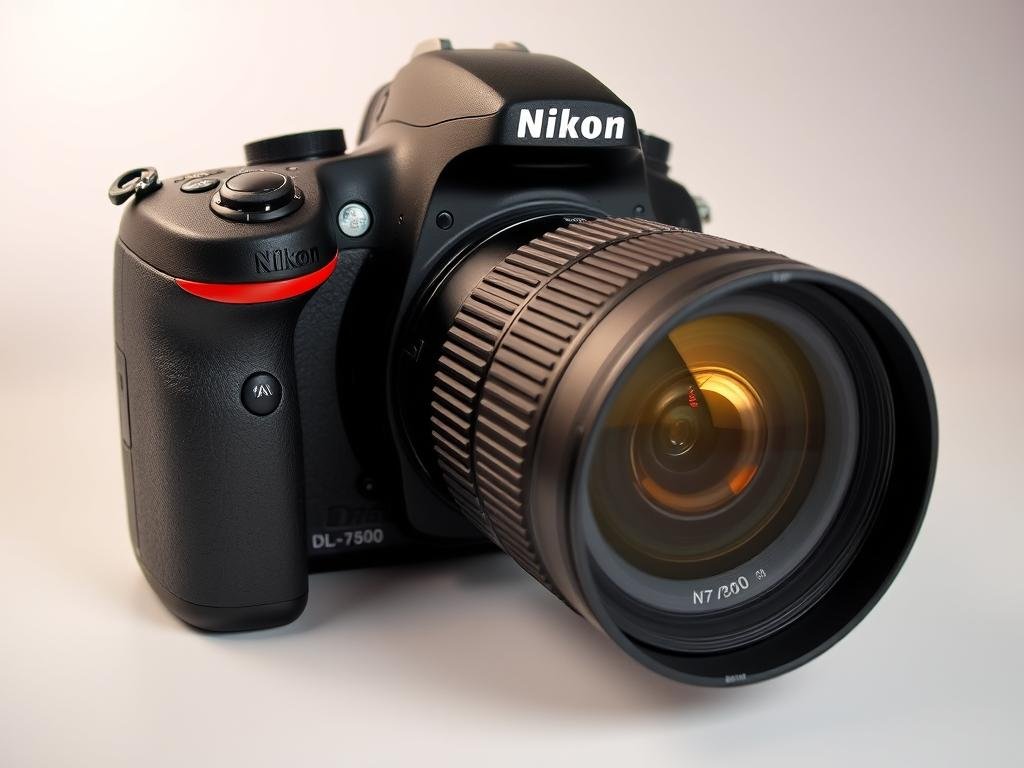
| Specifications | Details |
| Sensor | 20.9MP APS-C CMOS |
| Processor | EXPEED 5 |
| ISO Range | ISO 100-51,200 (expandable to 1,640,000) |
| Continuous Shooting | 8fps |
| Autofocus | 51-point phase-detection system (15 cross-type) |
| Video | 4K/30p, 1080/60p |
| Stabilization | Lens-based only |
| Price Range | $899-$1,099 |
Pros
- Excellent value for money
- Good low-light performance
- Tilting touchscreen
- Impressive battery life (950 shots)
- Access to vast F-mount lens ecosystem
Cons
- Single SD card slot
- Limited to 20.9MP resolution
- No in-body image stabilization
- Autofocus system less advanced than newer models
The Nikon D7500 represents exceptional value for enthusiast photographers in 2025. While it lacks the cutting-edge features of the latest mirrorless cameras, it delivers where it matters most: image quality and reliability. The 20.9MP sensor, borrowed from the higher-end D500, performs admirably in a wide range of lighting conditions.
For photographers learning the fundamentals, the D7500’s optical viewfinder and traditional DSLR controls provide an intuitive shooting experience. The tilting touchscreen adds modern convenience while maintaining the classic DSLR handling that many photographers still prefer.
Perhaps the D7500’s greatest strength in 2025 is its value proposition. With the shift toward mirrorless, high-quality F-mount lenses are widely available at attractive prices on the second-hand market. This makes the D7500 an excellent entry point for photographers looking to build a capable system without breaking the bank.
Start your photography journey with the Nikon D7500
Exceptional value and reliable performance in a traditional DSLR package.
Top 2 Budget-Friendly Cameras Under $1,000
You don’t need to spend thousands to get a great camera in 2025. These budget-friendly options deliver impressive performance and image quality at accessible price points, making them perfect for beginners or photographers on a tight budget.
1. Canon EOS R10: The Affordable Mirrorless Marvel
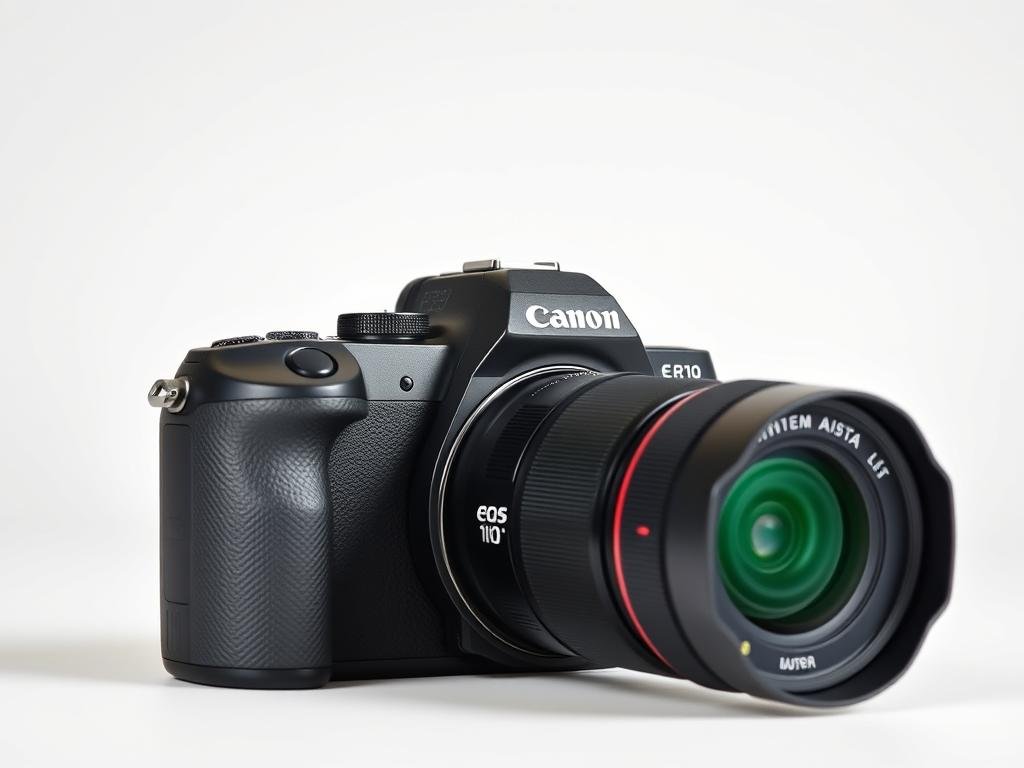
| Specifications | Details |
| Sensor | 24.2MP APS-C CMOS |
| Processor | DIGIC X |
| ISO Range | ISO 100-32,000 (expandable to 51,200) |
| Continuous Shooting | Up to 23fps (electronic), 15fps (mechanical) |
| Autofocus | 651-point Dual Pixel CMOS AF II with subject detection |
| Video | 4K/60p (crop), 4K/30p (oversampled), 1080/120p |
| Stabilization | Lens-based only |
| Price Range | $879-$999 (with kit lens) |
Pros
- Exceptional autofocus with subject detection
- Fast burst shooting capabilities
- Compact and lightweight design
- Fully articulating touchscreen
- Can adapt EF lenses with full functionality
Cons
- No in-body image stabilization
- Limited native RF-S lens selection
- 4K/60p has a significant crop
- Modest battery life
The Canon EOS R10 brings many features from Canon’s professional cameras to an affordable price point. Its standout feature is the Dual Pixel CMOS AF II system with subject detection, which delivers autofocus performance that was previously only available on cameras costing thousands more. The ability to shoot at up to 23fps makes it suitable for sports and wildlife photography, unusual capabilities at this price point.
While the native RF-S lens lineup is still growing, the EOS R10 is compatible with Canon’s vast EF lens ecosystem via an adapter. This gives beginners access to decades’ worth of lenses at various price points, making it easy to expand your system as your skills develop.
The fully articulating touchscreen and intuitive menu system make the R10 particularly user-friendly for beginners. Despite its entry-level positioning, the image quality is excellent, with Canon’s renowned color science producing pleasing results straight out of camera.
Start your mirrorless journey with the Canon EOS R10
Professional features at an accessible price point.
2. Olympus OM-D E-M10 Mark IV: The Compact Powerhouse
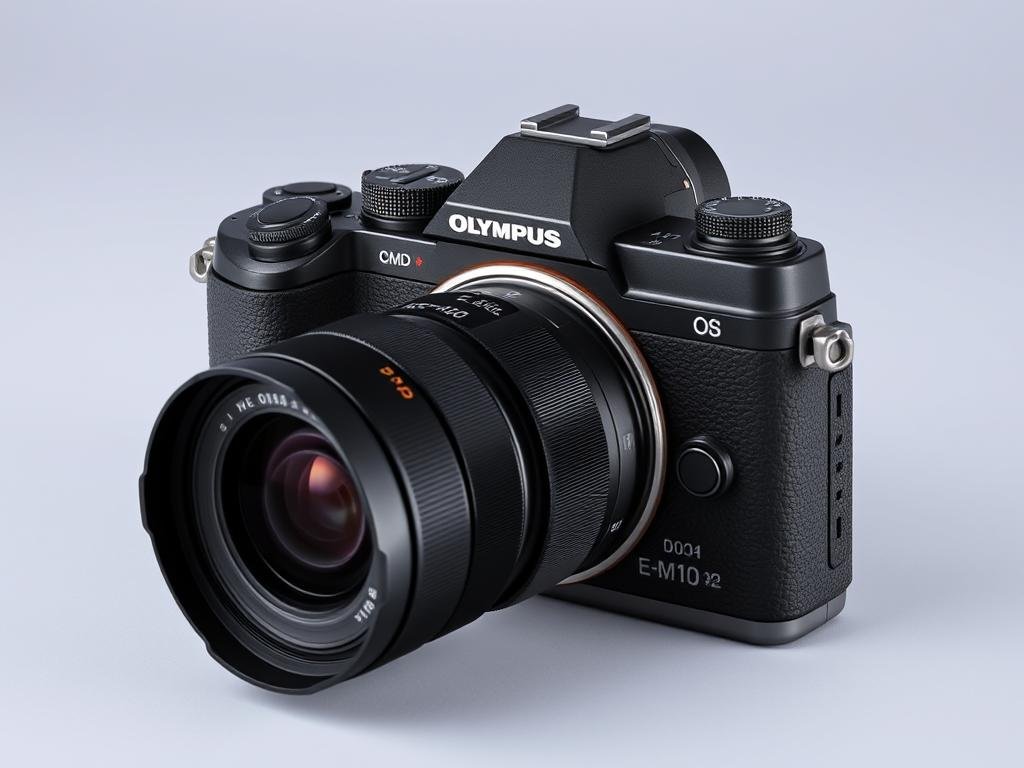
| Specifications | Details |
| Sensor | 20.3MP Micro Four Thirds CMOS |
| Processor | TruePic VIII |
| ISO Range | ISO 200-25,600 (expandable to 100) |
| Continuous Shooting | Up to 15fps (electronic), 8.7fps (mechanical) |
| Autofocus | 121-point contrast-detect AF |
| Video | 4K/30p, 1080/60p |
| Stabilization | 5-axis in-body image stabilization (4.5 stops) |
| Price Range | $699-$799 (with kit lens) |
Pros
- Compact and lightweight system
- Effective in-body image stabilization
- Tilting touchscreen with selfie capability
- Attractive retro design
- Access to extensive Micro Four Thirds lens ecosystem
Cons
- Contrast-detect AF not ideal for fast action
- Limited high ISO performance
- No microphone input for video
- Smaller buffer than some competitors
The Olympus OM-D E-M10 Mark IV offers incredible value for photographers seeking a compact, feature-rich camera. Its 20.3MP Micro Four Thirds sensor delivers pleasing images with Olympus’s distinctive color rendering. The built-in 5-axis image stabilization is a standout feature at this price point, allowing for sharp handheld shots at slower shutter speeds.
The E-M10 Mark IV excels in its approachability for beginners while offering room to grow. The Auto mode is intelligent enough to produce excellent results, while the camera’s physical controls and customization options provide a pathway to more advanced photography as skills develop.
Perhaps the E-M10 Mark IV’s greatest strength is its access to the vast Micro Four Thirds lens ecosystem. With options from Olympus, Panasonic, and third-party manufacturers, there are lenses available for virtually any photography style at various price points. The 2x crop factor also makes this an excellent choice for travel and wildlife photography, effectively doubling the reach of telephoto lenses.
Experience the Olympus OM-D E-M10 Mark IV
Compact, capable, and affordable—the perfect entry into the world of interchangeable lens cameras.
Future Camera Trends: What’s Next in Photography Technology
As we look beyond 2025, several emerging technologies are poised to reshape the photography landscape. Here’s a glimpse into the innovations that will define the next generation of cameras.

Next-generation camera technologies will blend traditional photography with computational imaging and AI
Advanced Computational Photography
Computational photography is evolving beyond simple HDR and portrait modes to fundamentally change how cameras capture images:
- Multi-frame synthesis – Cameras will capture dozens of frames in an instant, intelligently combining them for perfect exposure, focus, and detail across the entire image
- Neural rendering – AI algorithms will be able to generate missing details or remove unwanted elements with unprecedented realism
- Computational optics – Software will increasingly compensate for lens limitations, potentially leading to smaller, lighter lenses without optical compromises
AI Integration Beyond Recognition
While current AI systems excel at subject recognition and tracking, future implementations will be far more sophisticated:
- Predictive photography – Cameras will anticipate decisive moments and begin capturing before you press the shutter
- Scene understanding – AI will recognize not just subjects but entire scenes and their emotional context, suggesting composition and settings
- Creative assistance – AI will offer real-time guidance on composition, lighting, and technical settings tailored to your personal style
Augmented Reality Viewfinders
The next evolution of electronic viewfinders will incorporate augmented reality elements:
- Real-time exposure visualization – See exactly how changes to settings will affect your final image before taking the shot
- Composition guides – Dynamic overlays that adapt to your scene and subject
- Historical context – Information about locations, including how other photographers have captured the same scene
Sensor Technology Breakthroughs
Sensor development continues to push boundaries beyond simple resolution increases:
- Global shutter CMOS – Eliminating rolling shutter distortion while maintaining high dynamic range
- Quad-Bayer 2.0 – Advanced pixel architectures that can adapt to different lighting conditions
- Organic sensors – Promising greater sensitivity and dynamic range than silicon-based sensors
Connectivity and Ecosystem Integration
Cameras will become more connected and integrated with broader creative workflows:
- Seamless cloud integration – Automatic backup and synchronization across devices
- Collaborative features – Real-time sharing and feedback during photo shoots
- Cross-platform editing – Start editing on your camera and continue seamlessly on other devices
These emerging technologies suggest that the future of photography will increasingly blend traditional optical excellence with computational power. While the fundamental principles of photography remain unchanged, the tools we use to realize our creative vision will continue to evolve in exciting ways.
Conclusion: Finding Your Perfect Camera in 2025
As we’ve explored throughout this guide, 2025 offers an incredible range of cameras to suit every photographer’s needs, style, and budget. The best camera for you ultimately depends on your specific requirements and how you plan to use it.

The right camera is the one that helps you realize your creative vision
Recommendations Based on Photographer Type
For Professional Photographers
- All-around excellence: Sony Alpha a1 II
- High-resolution work: Canon EOS R5 Mark II
- Sports and wildlife: Nikon Z9
- Wedding and events: Canon EOS R6 Mark II
- Studio portraiture: Sony A7R V
For Enthusiast Photographers
- Best value mirrorless: Nikon Z6 III
- Best APS-C system: Fujifilm X-T5
- Best for travel: OM System OM-1 Mark II
- Best for street photography: Fujifilm X100VI
- Best DSLR option: Nikon D850
For Beginner Photographers
- Best entry-level mirrorless: Canon EOS R10
- Best budget option: Olympus OM-D E-M10 Mark IV
- Best for learning: Nikon D7500
- Best compact system: Fujifilm X-S20
- Best smartphone alternative: Sony ZV-1 II
Final Thoughts
Remember that the perfect camera is the one that fits your needs, budget, and shooting style. While specifications and features are important, also consider factors like ergonomics, menu systems, and lens ecosystems that will impact your day-to-day shooting experience.
In 2025, we’re fortunate to have cameras that are more capable than ever before. Even budget-friendly options now offer features and image quality that would have been considered professional-grade just a few years ago. Whether you’re just starting your photography journey or looking to upgrade your professional kit, there’s never been a better time to invest in a new camera.
Ultimately, the best camera is the one that inspires you to get out and shoot. Technology continues to advance, but the fundamental joy of photography remains unchanged: capturing moments, expressing creativity, and sharing your unique perspective with the world.
Ready to find your perfect camera?
Compare prices and read user reviews for all the cameras featured in this guide.


